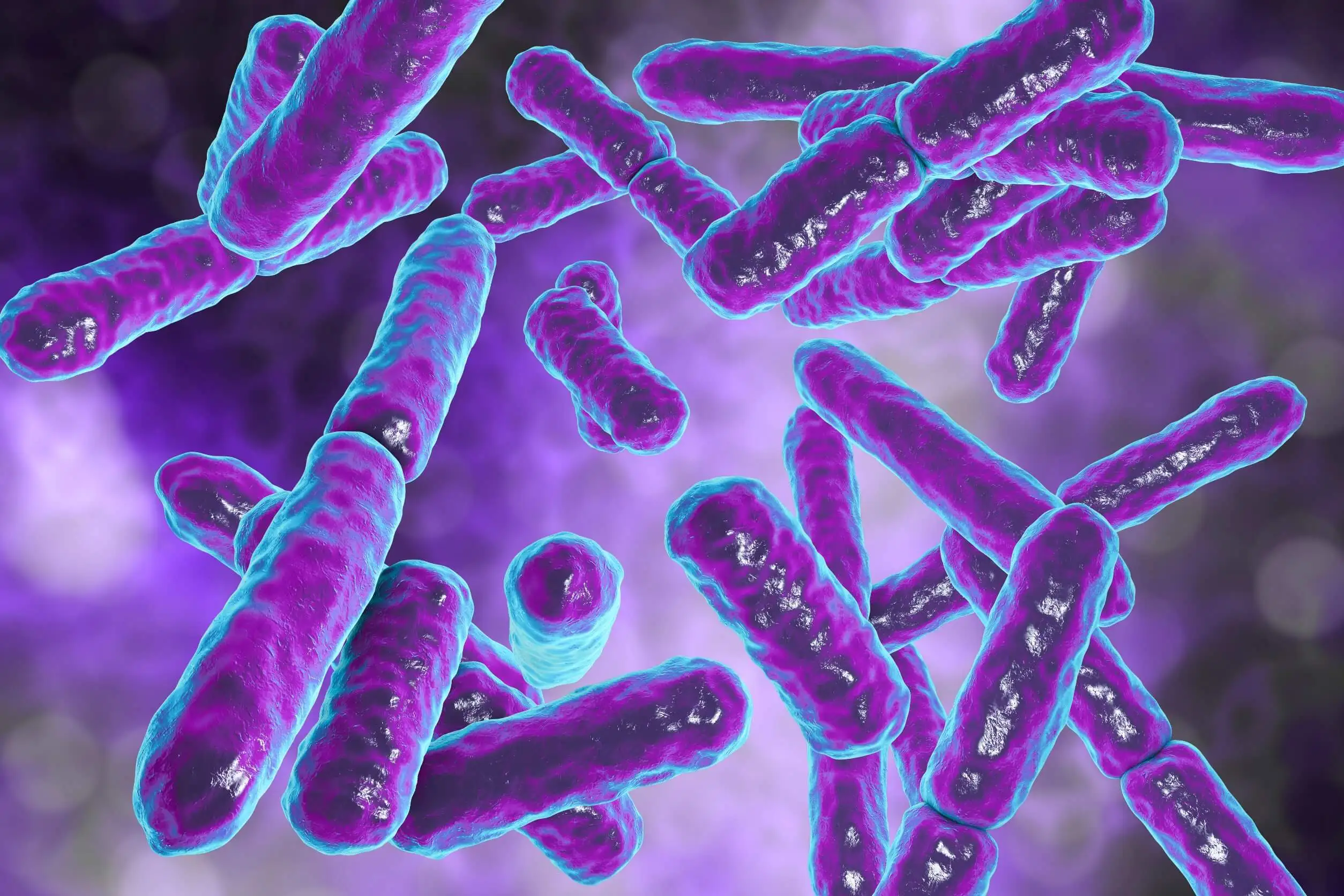Cured Meat: What You Should Know


Written and verified by the nutritionist Maria Patricia Pinero Corredor
When we think of something fermented or cured, it’s possible that something pleasant does not come to our minds. The reality is that we are surrounded by this type of products. Like, for example, cured meat, which is a type of dried, prepared, and dehydrated meat that’s treated with chemical techniques.
In addition, bacteria and yeasts are introduced into it to convert certain nutrients into mixtures of acid, carbon dioxide, and alcohol. Several traditions in the world include it in their gastronomic history. The most famous variety is probably salami.
In this article, we’ll take a closer look at this food, how it’s created, its benefits, and possible contraindications. To surprise you, you will realize that among its ingredients and its captivating flavor are live bacteria!
What is cured meat?
The European Union Regulation defines cured meat as a portion of food intended by the producer or manufacturer for direct human consumption. That is to say, there’s no need to cook it or subject it to any transformation to eliminate or reduce dangerous microorganisms.
This type of product is obtained in the following way:
- By lowering pH levels due to microbial fermentation of the carbohydrates added to the meat mixture.
- With the reduction of water due to the solutes added and progressive dehydration in the maturation process.
- With the addition of nitrates and nitrites to prevent the growth of pathogenic microorganisms.
- Through the use of spices to reduce microbial activity.
That is, these are products to which some type of bacteria, mold, or yeast was deliberately added to alter their characteristics in terms of flavor and texture. In fact, the flavor of cured meat is usually described as more intense. For example, there’s Serrano ham.
We think you may be interested in reading this, too: Red and White Meat Affect Cholesterol in the Same Way, Studies Show
What are cured meats?
Cured meats are, for example, the following:
- Salami
- Sausages
- Pepperoni
- Certain types of ham
What is the curing process like?
The elaboration of this type of product is done by two techniques: slow maturation and fast maturation.
By “maturation” we refer to the process through which the meat’s own enzymes act to break down the muscle protein after rigor mortis. Thus, slow maturation is when the product is kept for a certain time in specific conditions of low temperatures and relative humidity.
Thus, acid-producing microorganisms, such as lactobacilli, grow,which also provide nutrient-transforming enzymes. Rapid ripening is when cultures of lactic microorganisms are used intentionally. Ripening occurs at temperatures of 25 ° Celsius degrees or more.
The type of bacteria is also usually lactobacilli, because with them fermentation is easier to control and the time is shorter. On the other hand, the risks of uncontrolled microbial contamination are reduced.
When a ripening process is carried out, sugars are added and the bacteria use them as a substrate to produce lactic acid, causing a decrease in pH. The product acquires an acidic taste and a smooth texture.
The percentages of ingredients for meat fermentation are usually as follows:
- Beef: 80 %
- Pork fat: 20 %
- Curing salts, as nitrate: 0,01 %
- Erythorbate: 0,05 %
- Sucrose: 1%
- Common salt: 2,5 %
- Pepper: 0,2 %
- Culture: Lactobacillus casei

Like this article? You may also like to read: Advantages and disvantages of syntethic meat
The sensory appearance of cured meats
Depending on the process, the aroma, flavor, and appearance of the meat changes. It also varies according to the days spent curing. For example, when there is a humid environment, the intensity of flavor and aroma is lower.
When the environment is dry, the odor and flavor are greater. If it has little maturing time, the flavor is mild and not very intense.
The benefits of cured meat
Cured meat, like other fermented or cured foods, has several benefits related to its probiotic and nutritional effects. Let’s take a look at some of them.
It can function as a probiotic food
The main benefit attributed to cured meat is that it can function as a probiotic. In particular, fermented meat products made from Lactobacillus lactis, Lactobacillus plantarum and Staphilococcus sp.
As explained in the journal Anales de Pediatría, these bacteria, along with many others, remain alive in the digestive tract after ingestion. From here they exert clear health benefits.
A study evaluating the viability of Lactobacillus lactis and Plantarum, along with other strains, found both to be among the best probiotic options when applied to meats.
E. faecium is also considered prebiotics and has been found naturally in some fermented or cured meats. A study that evaluated the viability of several strains determined that this bacterium, used in cured meats, can act as a probiotic. Likewise, it doesn’t represent a danger to human health.
Some studies have analyzed the potential of the probiotics most frequently used in the production of fermented meats. They found that Lactobacillus rhamnosus survives passage through the gastrointestinal tract and its use as a starter culture ensures a safe and improved fermented or cured meat.
It contributes to intestinal health
Cured meats can be used as food supplements, since their probiotic characteristic can help the intestinal microbiota. That is, by ingesting certain organisms, the good bacteria found in the digestive tract will be strengthened.
Lactobacilli promote the maturation of the intestine and its integrity. In addition, they decrease the proliferation of disease-causing bacteria. They also produce natural antibiotics with a high spectrum of activity, which could combat diarrhea.
The Revista Chilena de Nutrición explains that Lactobacillus rhamnosus, which is common in this type of meat products, has the capacity to interfere with bacteria that make the intestine sick, such as Salmonella and enterotoxigenic E. coli. enterotoxigenic E. coli.
It enhances the barrier effect of the intestine
Cured meats, through their beneficial bacteria, can reduce permeability and enhance the barrier effect of the intestine, contributing to the modulation of intestinal immunity. Especially because of the ability of the good bacteria to adhere to the cells of the colon and affect the composition of the intestinal ecosystem.
On the other hand, a couple of experts point out that some bacteria with which fermented or cured meats are prepared to have the ability to strengthen the defenses of people whose immune system is suppressed, especially in the case of elderly adults.
It helps the body produce vitamins
The bacteria used for meat fermentation, as well as for other probiotic foods, are capable of synthesizing vitamins at the intestinal level. In particular, this includes B vitamins and ascorbic acid.
This occurs because the bacteria are self-sustaining. As they grow, they produce what they need to multiply. The vitamins they produce most are thiamine, riboflavin, pyridoxine, and cyanocobalamin, or B12.
It improves the absorption of minerals
Cured meats also help to better absorb minerals such as iron and zinc, because these trace elements are absorbed more when the pH is acidic. Cured meats are acid transporters. Therefore, when they reach the intestine, they promote better absorption.
They’re more easily digestible
In addition to all the benefits of eating cured meat, it’s considered a highly digestible food. Its proteins are transformed into peptides and free amino acids by microorganisms.
When cured meat is ingested, we’re consuming a denatured protein that facilitates the work of digestive enzymes. In this way, it increases the absorption of amino acids, many of which are essential.

Possible contraindications
Caution is recommended in the intake of fermented meat in the case of people suffering from arterial hypertension, blood lipid disorders, or those who are careful with their sodium intake. For these people, there could be noticeable adverse reactions.
It’s also recommended to regulate consumption for people with diabetes, allergies to sausages, or those who suffer from obesity. Those who develop metabolic syndrome should also remove the consumption of these meat derivatives from their dietary plan.
It’s all about safe portions of cured meat
Cured meats are usually expensive, but their flavor and nutritional value are sought after and selected. However, they should be consumed in amounts that are safe for health, since the addition of nitrites, nitrates, and saturated fats could have adverse effects.
It’s recommended to consume them in portions of 50 to 60 grams per day, 2 times a week. In addition, they should be accompanied by enough fruits and vegetables, which increases your intake of fiber and antioxidants.
All cited sources were thoroughly reviewed by our team to ensure their quality, reliability, currency, and validity. The bibliography of this article was considered reliable and of academic or scientific accuracy.
- Moreno, I., Marasca, E.T.G., De Sá, P.B.Z.R., De Souza Moitinho, J., Marquezini, M.G., Alves, M.R.C. et al. (2018) Evaluation of probiotic potential of bacteriocinogenic lactic acid bacteria strains isolated from meat products. Probiotics and Antimicrobial Proteins, 10, 762–774.
- Zommiti, M., Cambronel, M., Maillot, O., Barreau, M., Sebei, K., Feuilloley, M. et al. (2018) Evaluation of probiotic properties and safety of Enterococcus faecium isolated from artisanal Tunisian meat ‘Dried Ossban’. Frontiers in Microbiology, 9, 1685.
- Rubio, R., Martín, B., Aymerich, T. & Garriga, M. (2014) The potential probiotic Lactobacillus rhamnosus CTC1679 survives the passage through the gastrointestinal tract and its use as starter culture results in safe nutritionally enhanced fermented sausages. International Journal of Food Microbiology, 186, 55–60.
- Paola Cáceres R, Martín Gotteland R. ALIMENTOS PROBIÓTICOS EN CHILE: ¿QUÉ CEPAS Y QUÉ PROPIEDADES SALUDABLES? Rev Chil Nutr Vol. 37, Nº1, Marzo 2010. Disponible en: https://scielo.conicyt.cl/pdf/rchnut/v37n1/art10.pdf
- Gill H, Rutherfurd KJ, Cross ML. Dietary probiotic supplementation enhances natural killer cell activity in the elderly: an investigation of age-related imunological changes. J Clin Immunol 2001; 21: 264-271.://pubmed.ncbi.nlm.nih.gov/11506196/
This text is provided for informational purposes only and does not replace consultation with a professional. If in doubt, consult your specialist.








